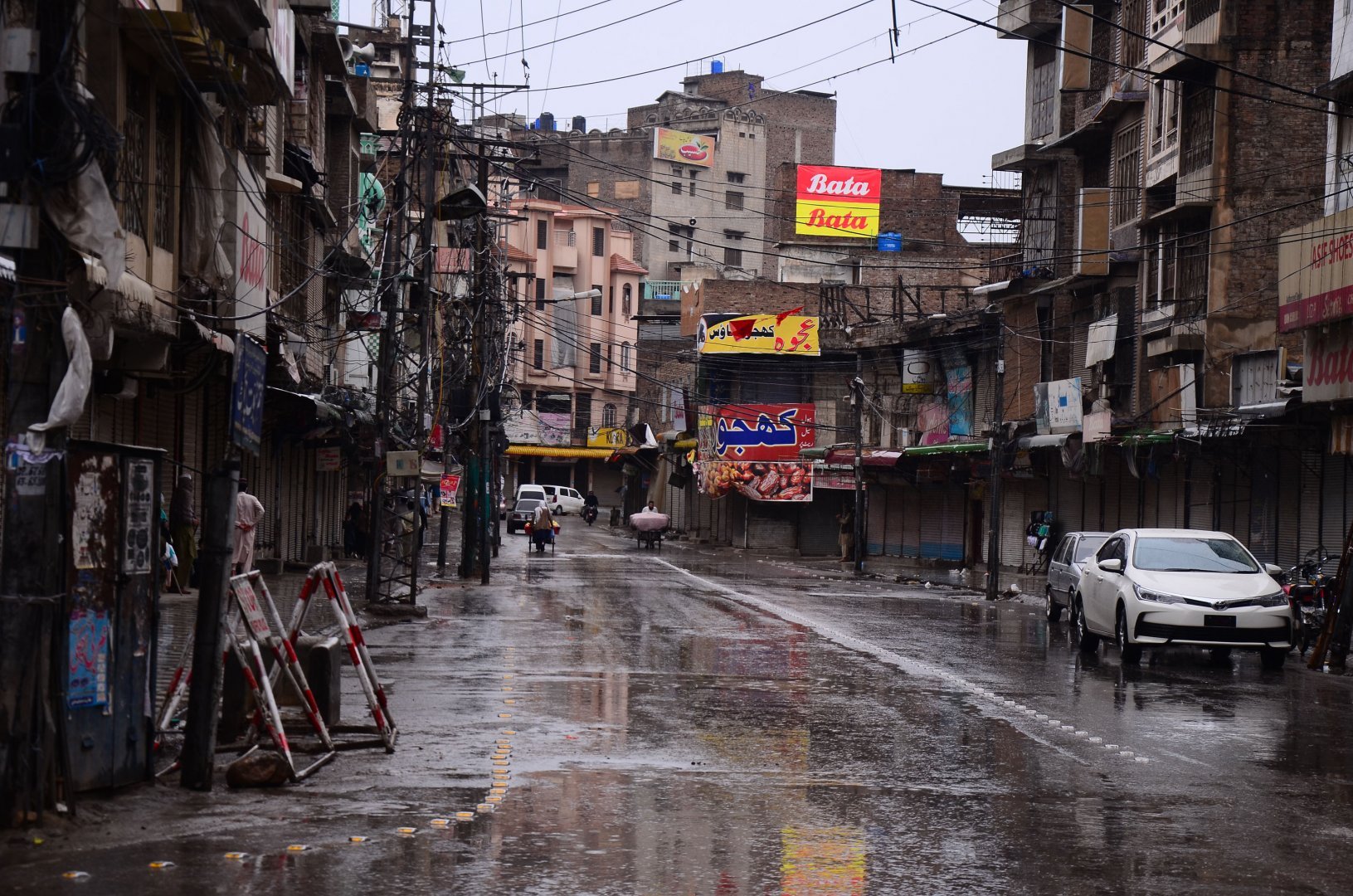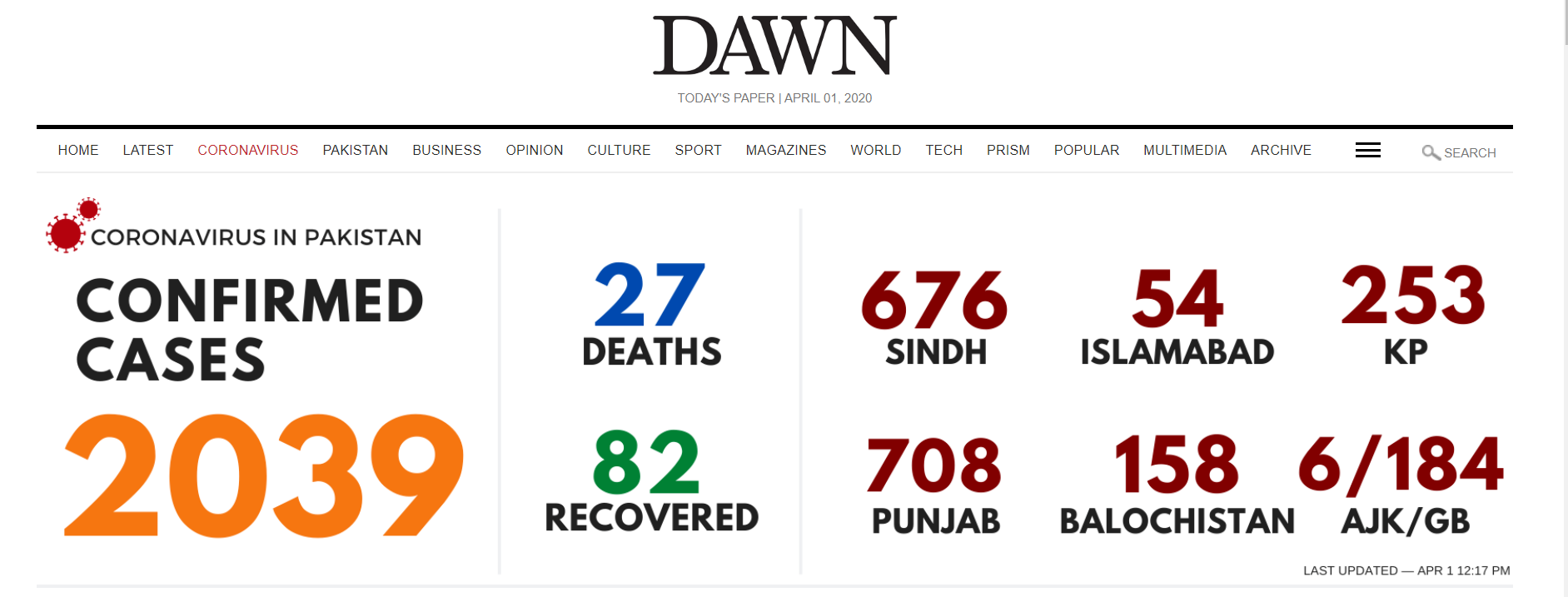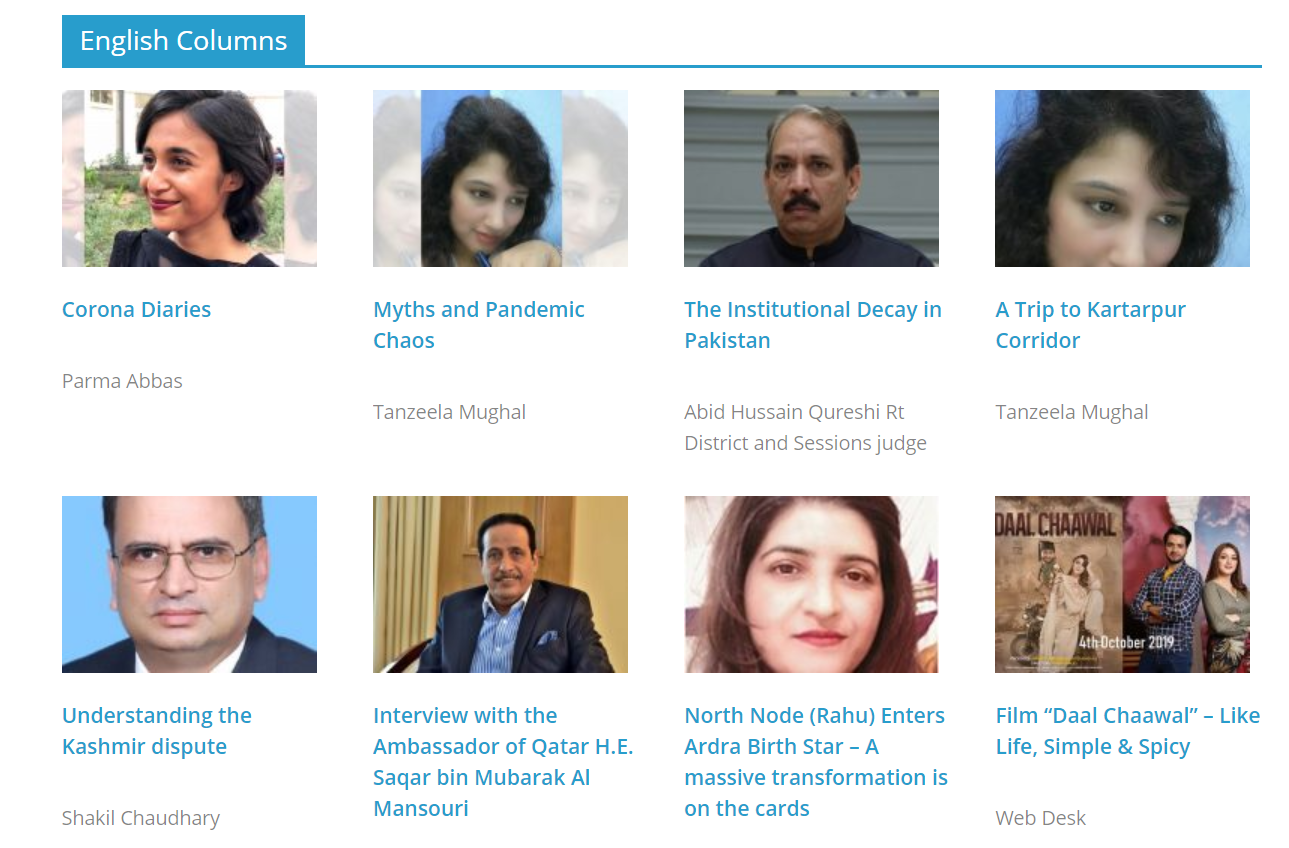
Pakistan: Responding to Covid-19 challenges with innovation
Reporting on the coronavirus in one of the most press restrictive environments in the world is a challenge – but it also opens up for new opportunities in local media.
Like elsewhere, the media in Pakistan is being tested on how to report the outbreak and impact of Covid-19, a phenomenon overwhelming state and society alike. Already one of the most difficult places on the planet to practice journalism in the pre-outbreak period due to its restrictive free speech environment and impunity of crimes against journalists, new challenges abound for Pakistani media in meeting its mandate of being the guardian of public interest on reporting Covid-19.
From having to deal with new health-related safety issues for journalists in the workplace and risky field reporting environments to facing increasing mobility restrictions in the face of lockdowns; and from discovering a lack of reporters and editors who understand public health issues or access to health experts to generate reliable information, to facing challenges in generating adequate specialist content, the media in Pakistan is severely challenged professionally, but responding to the challenges.
The text in context: hard media environment
These challenges are exacerbated by the traditional context in which the media operates in Pakistan. The current government, in place for two years now, has implemented a coercive agenda to curtail free speech and pressurize media at the political level that hurts not just media but socio-political rights and civil liberties as well, adversely impacting freedom of expression and access to information. The Covid-19 situation has simply provided the government, one of the most media-unfriendly in recent decades, an opportunity to further this agenda in the garb of ostensibly discouraging panic and paranoia.

Even if the media could operate on an optimal level, it is challenged in informing public about the outbreak and its impact. On keeping the public informed about its response to the virus, the Pakistan government has not been able to mobilize the relevant departments, develop a well-coordinated action plan and provide trustworthy leadership. The messaging on Covid-19 from the government continues to be confused and driven by the dynamics of its adversarial political relations with the country’s provinces.
The media’s credibility, therefore, and the quality of the Covid-19 situation information it is providing is impacted by the restrictions and degraded capacities forced upon it. These are hard times in Pakistan for regular media to provide reliable and adequate information based on people’s enhanced needs.
Despite these challenges, mainstream Pakistani media, insofar as basic Covid-19 information such as reliable figures of victims and identification of the interfaces where the public and officialdom can engage on responding to the health crisis is concerned, has responded with innovation. This has somewhat enhanced the credibility of media since the public does not seem to be getting useful information directly from the government.
As the mediator between the citizen and state, the media is, generally, helping sift between reliable and unreliable information and between information, disinformation and misinformation. By holding the government accountable for its underwhelming Covid-19 response, the media, in general, is also staying true to its mandate of being the guardian of public interest.
Rising to the occasion: media innovation and transformation
Never one to give up, the media in Pakistan has accepted the challenges of tackling restrictive policy environment and workflow blues by innovating their operational and news content strategies. For starters, mainstream print establishments (facing distribution problems) and even current affairs TV channels which can’t generate pre-outbreak levels of field-based content have rapidly beefed up their digital operations, reworking their websites and social media accounts to focus on Covid-19 coverage.
Through a range of activities, IMS works with local digital journalism platforms in advocating for a facilitative environment for indenpendent digital media in Pakistan. Among them are Dawn.com, Humsub and Sujag who have all created new initiatives to provide reliable and diverse information to the country’s public.
Dawn.com, part of one of Pakistan’s largest media groups, for example, is your standard independent English news media operation that carries the entire gamut of journalism formats including hard news, analyses, features and independent opinions. “We decided to retain all these with an overwhelming focus on Covid-19 and to add value to the special coverage, and have launched three distinct customized content categories,” says Jahanzaib Haque, the chief digital strategist and editor of the platform.
The first is Live Coronavirus Updates– a live tabulation of key news and other information coming in about the virus condensed to a byte size display with links to details for those interested. It provides a quick update, helping readers skirt the information overload. The second is the Pakistan Corona Statistics Dashboard – which contains tabulated statistical updates from the federal and provincial governments which are otherwise not generated from a single source in the government. Another is the #coronagoodnews on its account on Instagram, which has proven popular as it offers a conscious effort to move away from the ‘scary and intense’ side that characterises the mainstream coverage of Covid-19. “These three streams, feeding into the media groups other social media accounts, are generating immense traffic, which has grown six-fold from before Covid-19 hit Pakistan,” Haque adds.

Other online-only innovative digital media platforms in Pakistan are also leading the charge for good coverage. Humsub is primarily the country’s largest citizen opinion and information digital portal and the largest repository of citizen blogs revolving around all issues – from the current Covid-19 crisis to governance, development, radicalization, rights of women, transgenders and religious minorities. Adnan Khan Kakar, the editor of the platform, explains that even after Covid-19 erupted in early March in Pakistan and swept all other issues away, Humsub’s primary digital content offering has remained mainly opinions and blogs, not news.

“After the Covid-19 outbreak in Pakistan, with mainstream media struggling to offer consistently reliable and adequate information as a substitute for a bumbling government, all the traditionally missing opinions, views and opinions – including those of women, minorities, and both experts and ordinary citizens as well as opinion makers – have found the most prominent place on Humsub. We offer a varied palette of vox populi [‘voice of the people’]. That’s because there is no ‘competition’ among opinions as there is among news from different sources. The enhanced numbers of people writing to us and the distinctly high traffic we are getting on our Covid-19 focus seems like an across-the-board phenomenon for us,” he says.
For Humsub, the measure of how popular the demand for diverse and plural opinions on the virus is a doubling of submissions they are getting for publication. Before the outbreak, they had a turnover of about 50 original submissions a day, and now this has gone over 100 submissions daily.
The other unusual thing is the increased diversification of voices and opinions that the pandemic is generating. “It seems like sections of the society being ignored by the government in its official Covid-19 response are crying out for attention. They are not finding a voice in mainstream media, but they are getting a platform on Humsub to amplify across Pakistan. This reinforces our mandate of amplifying the broad spectrum of diverse and plural opinions in Pakistan,” Kakar adds.
Lost in the battle for news originating from the state are communities hit hardest by the pandemic – the poorest and the most marginalized. Sujag, a digital news service serving as a voice of the voiceless in districts of Punjab province’s 105 million population has focused on Covid-19 by experimenting with personal video testimonies – named “Corona Kahani[Stories]” on its popular social media Facebook (Sujag Videos) and YouTube (Sujag Videos) accounts.
Tahir Mehdi, the chief executive of Sujag and a celebrated former print media journalist, explains that the concept of ‘Corona Kahani’ is premised on this quote by Arundhati Roy [Booker prize winner for her novel ‘The God of Small Things’]: “There’s really no such thing as the ‘voiceless’; there are only the deliberately silenced, or the preferably unheard.”
“Through Corona Kahani, Sujag is bringing forth the voices of the deliberately silenced and the preferably unheard being ignored by Pakistan’s offline mainstream media insofar as the hardest hit by Covid-19 in Pakistan are concerned,” says Mehdi. A testimony of a daily wage earner hit by business closures caused by the virus saying the poor have to choose between death by hunger or by disease has garnered over 100,000 views.

The flip side of challenges for media: opportunities!
Pakistani media recognizes that the major challenges they are dealing with regarding the impact of Covid-19 also offer some opportunities for optimal transformation and progress, especially on how to strengthen the digital news footprint of a rapidly digitalising society and public interest journalism.
Haque of Dawn.com says that the old media establishment of newspapers and TV journalism in Pakistan are also weakening and losing audiences and revenues, following global trends. “This was already happening pre-pandemic. The peculiar circumstances thrown up by the Covid-19 situation offer an opportunity to fast-track adaptation towards a greater consolidation of the shift to digital journalism and deepening journalism professionalism in Pakistan,” he says.
Mehdi of Sujag agrees that by quickly adapting to the needs for specialized and customized coverage based on their respective audiences is helping Pakistani media evolve. “The biggest Covid-19 aftermath opportunity also happens to be the flip side of its biggest challenge – converting growing digital news traffic into business revenues. This is not possible without the digital media platforms coming together and devising collective strategies to strengthen the growing footprint of digital news media in Pakistan,” says Mehdi.




